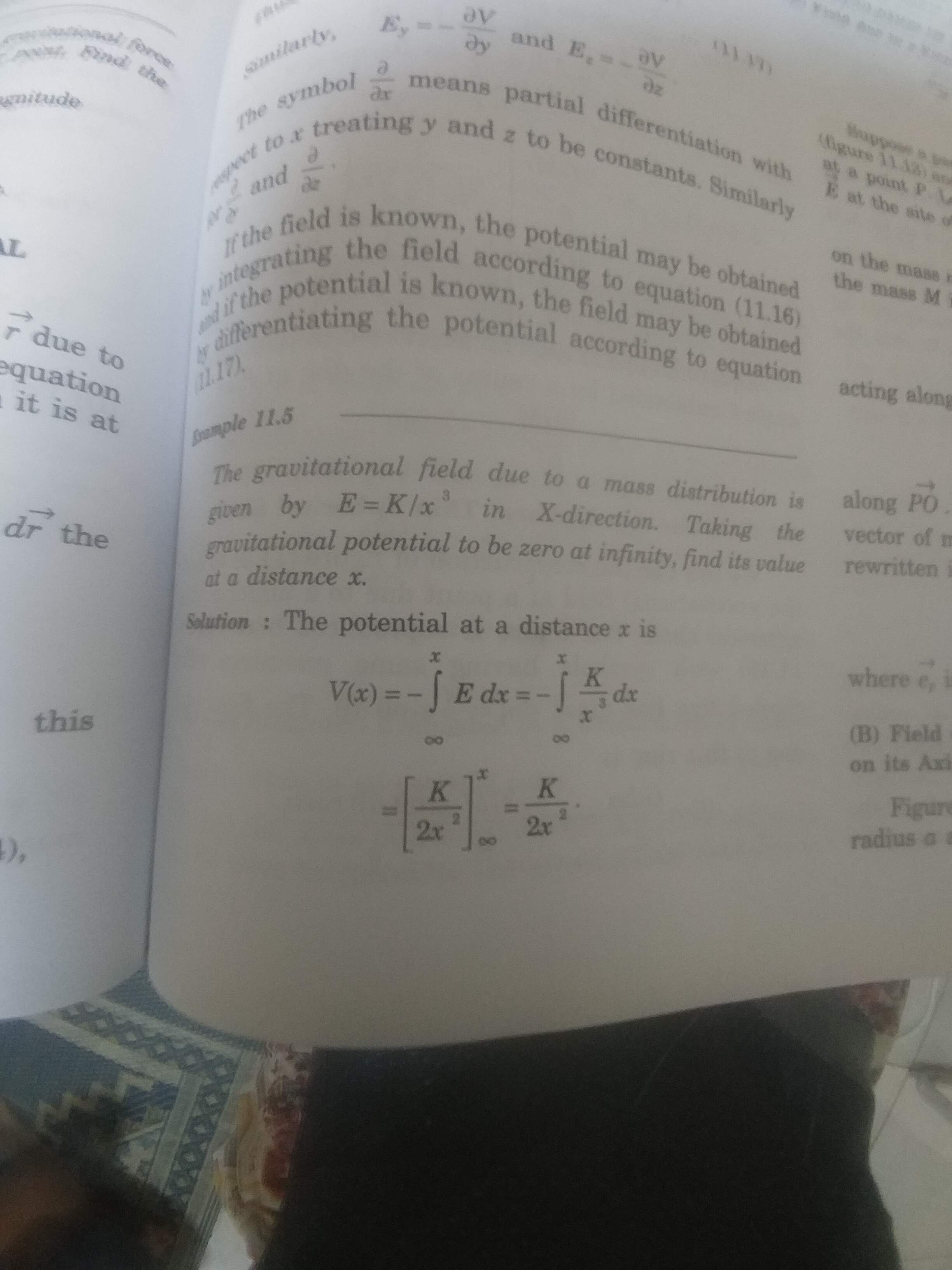The question implies that there is a mass at origin. Since gravitational force is always attractive and when we move from $\infty$ to $x$ we travel in the direction of the force, the cross product $\vec{E}.\vec{dx}$ is positive.
Hence, $V(x)=-\int_{\infty}^{x}Edx$
The rest is according to the book.
The question states that "...mass distribution is given by ... in X-direction", which can be interpreted as: $$\vec{E}=\frac{K}{x^3} \hat i$$
At the very beginning of section 11.7 of the said book, it can be seen that the equation $V(\vec{r})=-\int_{r_0}^{r}\vec E.d\vec x$ has been derived by assuming that the particle is displaced from $\vec r$ to $\vec r +d\vec r$, but no assumption has been made about the direction of $\vec F$ or $\vec E$.
Hence the direction of $d\vec r$ would be implicitly taken care of by limits of the integral. But we can set the direction of the field aa per our need. Check J.G's post here
The integration would proceed like this:
$V(\vec{r})=-\int_{r_0}^{r}\vec E.d\vec x \\ \Rightarrow V(\vec{r})=-\int_{\infty}^{x}\frac{K}{x^3} \hat i . dx \hat i \\ \> \> \> \> = -\int_{\infty}^{x}\frac{K}{x^3}.dx$
SIDENOTE: In H.C. Verma's book, it is given that $V(\vec{r})=-\int_{\vec{r_0}}^{\vec{r}}\vec E.d\vec x$. But it must be noted that the limits of the integration cannot be taken as vectors.

